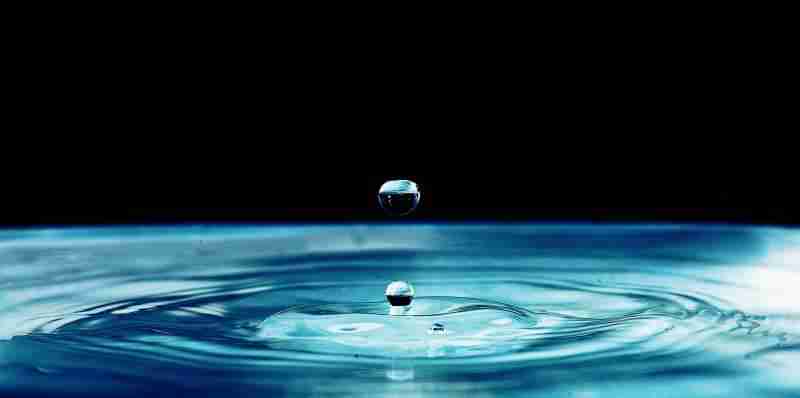In today’s world, the environmental impact of restoration services is a growing concern for both homeowners and businesses. At Projekt Restoration, your go-to experts in water, fire, and mold restoration, we understand the importance of sustainable practices in our industry. Our comprehensive services, including mold assessment, biohazard cleanup, and reconstruction, are designed not only to restore your property but also to minimize environmental harm. By employing eco-friendly techniques and materials, Projekt Restoration ensures that our restoration efforts contribute positively to the environment. In this blog, we will explore how our restoration services impact the environment and the steps we take to promote sustainability.
Understanding Restoration Services

Restoration services play a crucial role in mitigating the environmental impact of disasters and damage. These services encompass a wide range of activities aimed at restoring properties to their pre-damage state while minimizing ecological harm. Understanding the environmental impact of restoration services is essential for both property owners and service providers.
Restoration services can significantly reduce waste and pollution by salvaging and repairing existing structures rather than opting for complete demolition and reconstruction. This approach not only conserves resources but also reduces the carbon footprint associated with new construction. For instance, the use of eco-friendly materials and techniques in reconstruction can further enhance sustainability.
Moreover, specialized services like mold removal and biohazard clean-up are designed to address specific environmental hazards. These services ensure that harmful substances are safely removed and disposed of, preventing contamination of soil and water sources. According to the Environmental Protection Agency (EPA), proper mold remediation can prevent health issues and environmental degradation.
The use of advanced technologies, such as infrared thermal imaging, allows for precise detection of hidden damage, reducing unnecessary demolition and waste. This technology aids in identifying moisture intrusion and energy inefficiencies, promoting more targeted and effective restoration efforts.
In conclusion, restoration services are integral to environmental conservation during recovery processes. By employing sustainable practices and advanced technologies, these services not only restore properties but also contribute to a healthier planet.
For more information on how restoration services can benefit your property and the environment, visit our contact page.
References:
- Environmental Protection Agency (EPA). “Mold Remediation in Schools and Commercial Buildings.” [EPA](https://www.epa.gov/mold/mold-remediation-schools-and-commercial-buildings)
- National Institute of Environmental Health Sciences (NIEHS). “Hazardous Waste Cleanup.” [NIEHS](https://www.niehs.nih.gov/health/topics/agents/hazardous-waste/index.cfm)
The Role of Restoration in Environmental Conservation

Restoration services play a pivotal role in environmental conservation by mitigating the adverse effects of natural and man-made disasters. These services not only help in the immediate aftermath of events like floods, fires, and mold infestations but also contribute to long-term ecological balance. By addressing issues such as water damage and mold growth, restoration services prevent further degradation of affected areas, thereby preserving natural habitats and biodiversity. For instance, effective water damage restoration can prevent the proliferation of mold, which can have detrimental effects on both human health and the environment.
Moreover, restoration services often involve the use of eco-friendly techniques and materials, which minimize the environmental footprint of the recovery process. This is particularly important in areas prone to recurring natural disasters, where sustainable practices can significantly reduce the cumulative environmental impact. Services like fire damage restoration not only rehabilitate affected structures but also help in soil stabilization and reforestation efforts, which are crucial for preventing erosion and promoting ecological recovery.
In addition to immediate recovery, restoration services also offer preventive measures such as infrared thermal imaging to detect potential issues before they escalate. This proactive approach not only saves costs but also ensures that the environment remains protected from further harm. By integrating advanced technologies and sustainable practices, restoration services are indispensable in fostering a resilient and healthy environment.
Assessing the Carbon Footprint of Restoration Activities

Understanding the carbon footprint of restoration activities is crucial in evaluating the overall environmental impact of restoration services. Restoration projects, whether they involve water damage, mold removal, or fire damage restoration, can significantly contribute to carbon emissions through the use of machinery, transportation, and materials. By assessing the carbon footprint, companies can identify areas where they can reduce emissions and implement more sustainable practices.
One effective method for assessing the carbon footprint is through the use of a carbon footprint calculator. This tool helps quantify the emissions produced during various stages of a restoration project, from initial assessment to the final cleanup. For instance, the transportation of equipment and personnel to the site, the operation of dehumidifiers and other machinery, and the disposal of waste materials all contribute to the overall carbon footprint.
Moreover, adopting eco-friendly practices, such as using energy-efficient equipment and opting for sustainable materials, can significantly reduce the carbon footprint. Companies can also consider offsetting their emissions by investing in renewable energy projects or participating in carbon offset programs.
For more detailed information on how to minimize the environmental impact of restoration services, you can explore our consulting services. Additionally, if you are dealing with specific issues like mold removal, our Cooper City mold removal and Davie mold removal services are designed to be both effective and environmentally conscious. By taking these steps, restoration companies can play a vital role in promoting sustainability and reducing their environmental impact.
Sustainable Practices in Restoration Services
Sustainable practices in restoration services are crucial for minimizing the environmental impact of restoration activities. By integrating eco-friendly methods and materials, restoration companies can significantly reduce their carbon footprint and promote a healthier planet. One of the primary sustainable practices is the use of green cleaning products, which are biodegradable and non-toxic, ensuring that harmful chemicals do not contaminate the environment. Additionally, companies are increasingly adopting energy-efficient equipment and techniques, such as infrared thermal imaging, to detect issues without causing unnecessary damage.
Another vital aspect of sustainable restoration is waste management. By recycling and reusing materials whenever possible, restoration services can drastically cut down on the amount of waste sent to landfills. This not only conserves resources but also reduces greenhouse gas emissions associated with waste decomposition. For instance, during reconstruction projects, salvaging and repurposing materials can make a significant difference.
Water conservation is also a key component of sustainable practices. Techniques such as dehumidification help in efficiently managing water usage during restoration, preventing excessive water waste. Furthermore, companies are now more inclined to use locally sourced materials, which reduces transportation emissions and supports local economies.
By embracing these sustainable practices, restoration services not only contribute to environmental preservation but also enhance their reputation and appeal to eco-conscious clients. Sustainable restoration is not just a trend but a necessary evolution towards a more responsible and environmentally friendly industry.
Case Studies: Successful Eco-Friendly Restoration Projects
In recent years, eco-friendly restoration projects have gained significant attention due to their positive environmental impact. These projects not only restore damaged areas but also ensure that the methods used are sustainable and environmentally responsible. One notable example is the restoration of wetlands in coastal regions. These projects have successfully revived natural habitats, improved water quality, and provided flood protection, showcasing the immense benefits of eco-friendly restoration.
Another successful project is the use of green infrastructure in urban areas to manage stormwater. By integrating permeable pavements, green roofs, and rain gardens, cities have effectively reduced runoff, improved water quality, and enhanced urban biodiversity. These initiatives demonstrate how urban planning can incorporate sustainable practices to mitigate environmental damage.
In the realm of residential and commercial properties, eco-friendly restoration services have made significant strides. For instance, the use of non-toxic materials and energy-efficient systems in reconstruction projects has not only minimized environmental impact but also improved indoor air quality and reduced energy consumption. Additionally, advanced techniques like infrared thermal imaging have been employed to detect and address hidden issues such as water leaks and insulation gaps, ensuring a thorough and sustainable restoration process.
These case studies highlight the importance of adopting eco-friendly practices in restoration services. By prioritizing sustainability, these projects not only address immediate damage but also contribute to long-term environmental health. For more information on how eco-friendly restoration can benefit your property, feel free to contact us.
Challenges and Solutions in Minimizing Environmental Impact
Restoration services play a crucial role in mitigating damage caused by natural disasters, water leaks, fires, and mold infestations. However, these services can also have significant environmental impacts. One of the primary challenges in minimizing this impact is the use of harsh chemicals and non-biodegradable materials. These substances can contaminate water sources and soil, posing long-term environmental risks. Additionally, the disposal of debris and waste generated during restoration can contribute to landfill overflow and pollution.
To address these challenges, restoration companies are increasingly adopting eco-friendly practices. For instance, the use of green cleaning agents and biodegradable materials can significantly reduce environmental harm. Implementing advanced technologies such as infrared thermal imaging helps in accurately identifying affected areas, thereby minimizing unnecessary demolition and waste. Moreover, proper dehumidification techniques can prevent mold growth without relying on harmful chemicals.
Another effective solution is the recycling and repurposing of materials. Instead of discarding all debris, companies can sort and recycle items like metal, wood, and glass. This not only reduces landfill waste but also conserves natural resources. Additionally, engaging in continuous consulting with environmental experts ensures that restoration practices are aligned with the latest sustainability standards.
By integrating these solutions, restoration services can significantly reduce their environmental footprint while still providing essential services to communities in need. For more information on eco-friendly restoration practices, visit our contact page.
Future Trends in Green Restoration Services
As the world increasingly prioritizes sustainability, the future of green restoration services is set to evolve significantly. One of the most promising trends is the integration of advanced technologies such as infrared thermal imaging to detect hidden damages and moisture without invasive procedures. This not only minimizes environmental impact but also enhances the efficiency of restoration processes.
Another emerging trend is the use of eco-friendly materials and methods in restoration projects. Companies are now focusing on biodegradable and non-toxic cleaning agents, as well as sustainable building materials, to reduce their carbon footprint. This shift is particularly evident in services like reconstruction, where the emphasis is on using recycled and locally sourced materials.
Moreover, the adoption of comprehensive environmental impact assessments is becoming standard practice. These assessments help in identifying the most sustainable approaches to restoration, ensuring minimal disruption to the natural ecosystem. For instance, in areas prone to water damage, advanced dehumidification techniques are employed to prevent mold growth and further environmental degradation.
The future also holds promise for increased community involvement and education. Restoration companies are likely to engage more with local communities to raise awareness about sustainable practices and the importance of environmental conservation. This holistic approach not only aids in immediate restoration efforts but also fosters long-term environmental stewardship.
In summary, the future of green restoration services is geared towards technological innovation, sustainable materials, comprehensive environmental assessments, and community engagement, all aimed at reducing the environmental impact of restoration activities.
In conclusion, the environmental impact of restoration services is a multifaceted issue that demands our attention and action. By prioritizing eco-friendly practices, utilizing sustainable materials, and embracing innovative technologies, restoration services can significantly reduce their ecological footprint. It is imperative for industry leaders, policymakers, and consumers to collaborate in promoting and adopting green restoration methods. By doing so, we not only preserve our natural resources and protect biodiversity but also ensure a healthier planet for future generations. Let us commit to making environmentally responsible choices in restoration services, thereby contributing to a more sustainable and resilient world.





